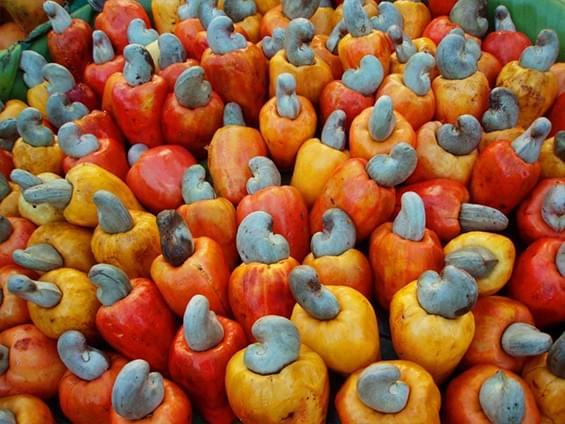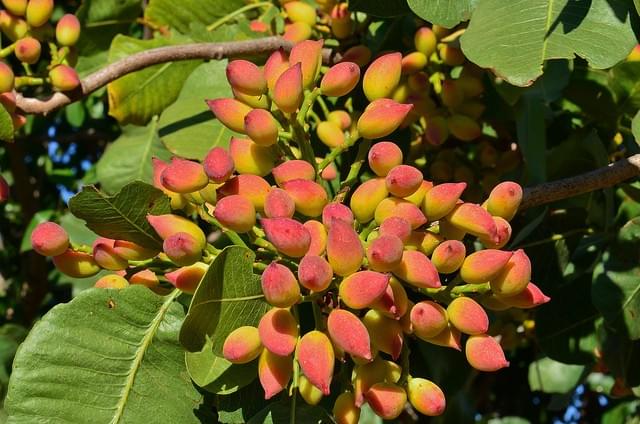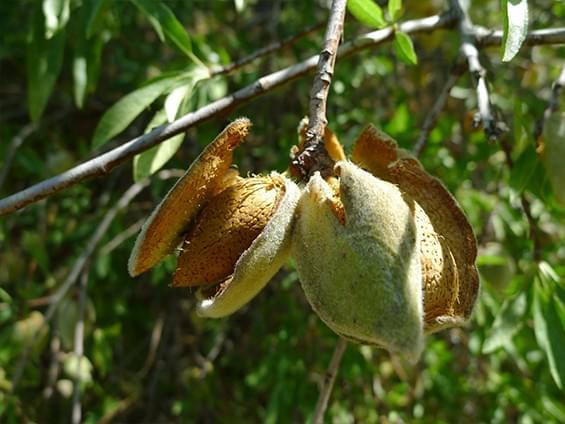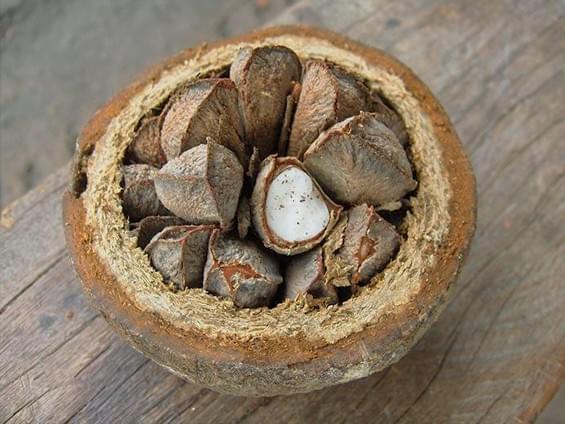Cashew Nuts

Courtesy of Lon&Queta (https://www.flickr.com/photos/lonqueta/)
Origin: India
Description: Cashew seeds are actually the kidney-shaped seeds that many know it as nuts. It grows from the bottom of the cashew apple, the fruit of the cashew tree. The interior of the shells contains a caustic resin, known as cashew balm, which must be carefully removed before the nuts are fit for consumption.
Benefits: Cashews contain a lot of vitamins and nutrients, but they also contain fats that are mostly monounsaturated and polyunsaturated. Mono- and polyunsaturated fats can help improve heart disease as well as reduce the risk for stroke and prevent weight gain.
Pistachio Nuts

Courtesy of plantvillage.org
Origin: USA
Description: The cultivated pistachio is a member of the cashew family. Pistachio trees are dioecious, meaning that there are separate male and female trees. The trees are planted in orchards, and take approximately seven to ten years to reach significant production. Production is biennial-bearing, meaning the harvest is heavier in alternate years. Peak production is reached around 20 years.
Benefits: Eating pistachio in moderation can be very beneficial for the health of the heart. It is rich in monounsaturated fatty acids that help to reduce high blood pressure. This helps to bring down the levels of bad cholesterol in the blood.
Almonds

Courtesy of mykitcheninspain.blogspot
Origin: USA
Description: Almonds are stone fruits eaten as nuts. Almonds produced commercially in the United States are grown in California. The earliest to bloom of stone fruits which is also known as drupes . The seed inside the almond fruit is what is commonly referred to as an almond “nut”.
Benefits: These nuts are one of the richest sources of vitamin E, it is known to help treat against Alzheimer's disease. Almonds contain unsaturated fats which have no cholesterol. It also aids in reducing the levels of LDL (low-density lipoprotein) which means bad cholesterol which then lower the chances of heart diseases.
Brazil Nuts

Courtesy of enkivillage.com
Origin: Bolivia
Description: Famous for reaching heights of over 160 feet, the Brazil nut tree towers above other trees predominantly found in the Amazon rainforest. Its fruit weighs up to 5 pounds upon ripening, falls to the ground. Inside the fruit's hard exterior are anywhere from 10 to 21 nuts.
Benefits: The antioxidants and organic compounds present in this nut makes it a strong contender for one of the most immune-boosting nuts around. The vitamin C content couples wonderfully with selenium and zinc to stimulate the production of white blood cells and stimulating antioxidant compounds throughout the body to neutralize free radicals (they destroy body cells), thereby preventing many chronic illnesses
Macadamia Nuts

Courtesy of davesgarden.com
Origin: Australia
Description: Macadamia nuts grow on large bushy trees which start producing after four or five years. Each spray of 40-50 flowers produces from four to 15 ‘nutlets’, which will eventually ripen into nuts. The fibrous outer husk of the macadamia is removed within 24 hours of harvest.
Benefits: They are an excellent source of protein and you can add in your salad or have them raw. The proteins that we get from macadamia nuts helps maintain our hair, skin and nails.
